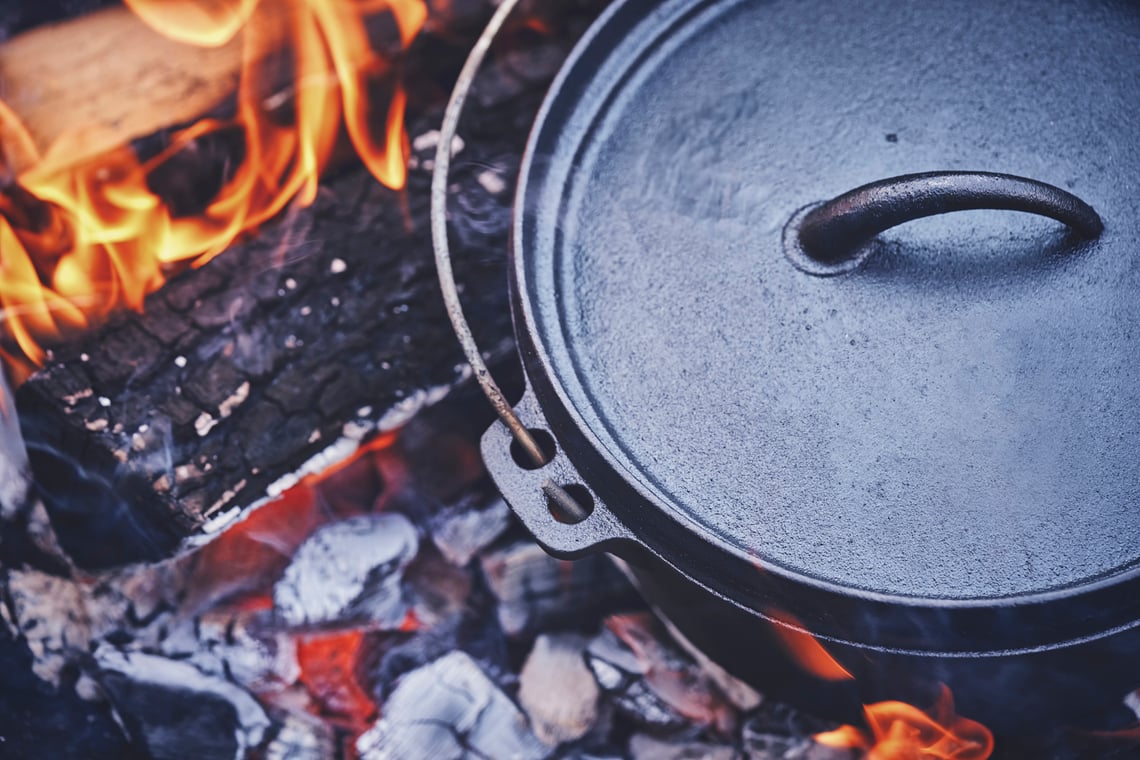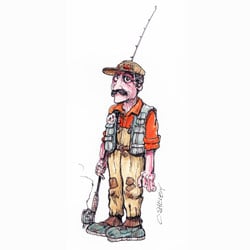Knowing how to cook without electricity not only makes camping and hunting trips more fun, it could make all the difference when an unexpected power outage hits. Jim Mize offers this crash course for beginner's, based on a recent demonstration from Dutch Oven expert, J. Wayne Fears.
J. Wayne Fears is the author of The Lodge Book of Dutch Oven Cooking and has years of experience cooking with Dutch Ovens. He recently conducted a seminar on the subject at the Southeastern Outdoor Press Association conference.
Dutch Oven cooking is popular for two reasons, says Fears.
First, Dutch Ovens are ideal for recreational cooking, whether at a hunting camp or tailgating at a football game.
Second, “Dutch Ovens are also a good crisis cooking method,” adds Fears. So when you need an efficient way to prepare a meal without power, Dutch Ovens may be your best choice.
The Timeless Lure of Dutch Oven Cooking
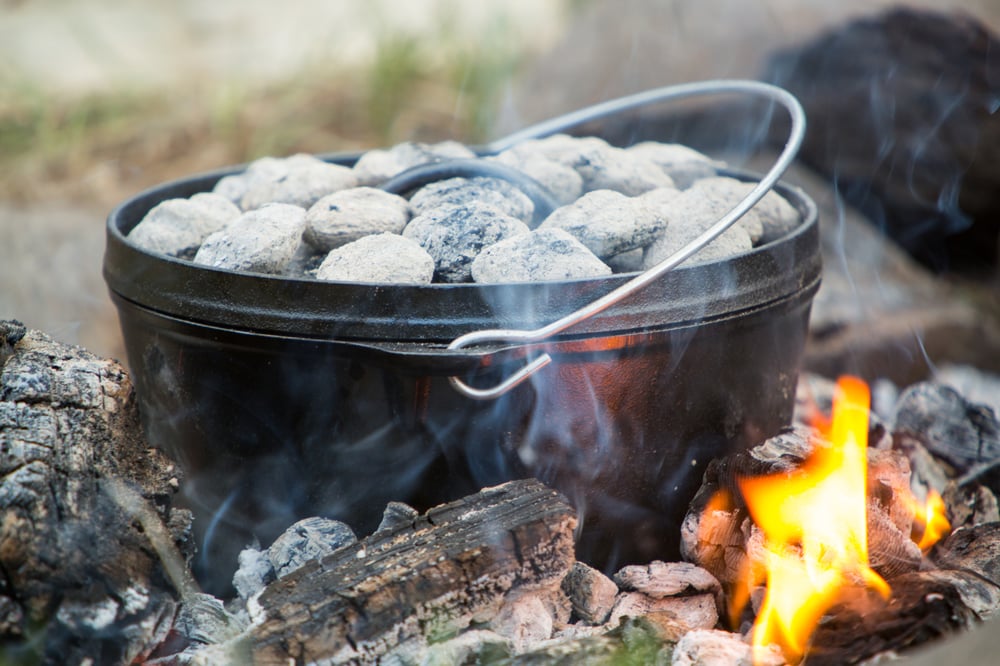
Dutch Ovens have a rich history, he explained, whether as a critical tool in the exploration of the western United States or as a valued keepsake passed down through generations.
For example, in his book Fears notes that Mary Washington, mother of General George Washington, specified in her will which grandchildren would inherit her iron kitchen furniture, which he believes included iron cookware.
This nostalgic aspect of Dutch Ovens is also part of the lure to this cooking method.
The traditional camp Dutch Oven is a heavy cast-iron pot with three short legs protruding about two inches. The bottom is flat and the lid is flanged so hot coals can be placed on top without rolling off.
The attributes of a Dutch Oven as a cooking device simply makes food better
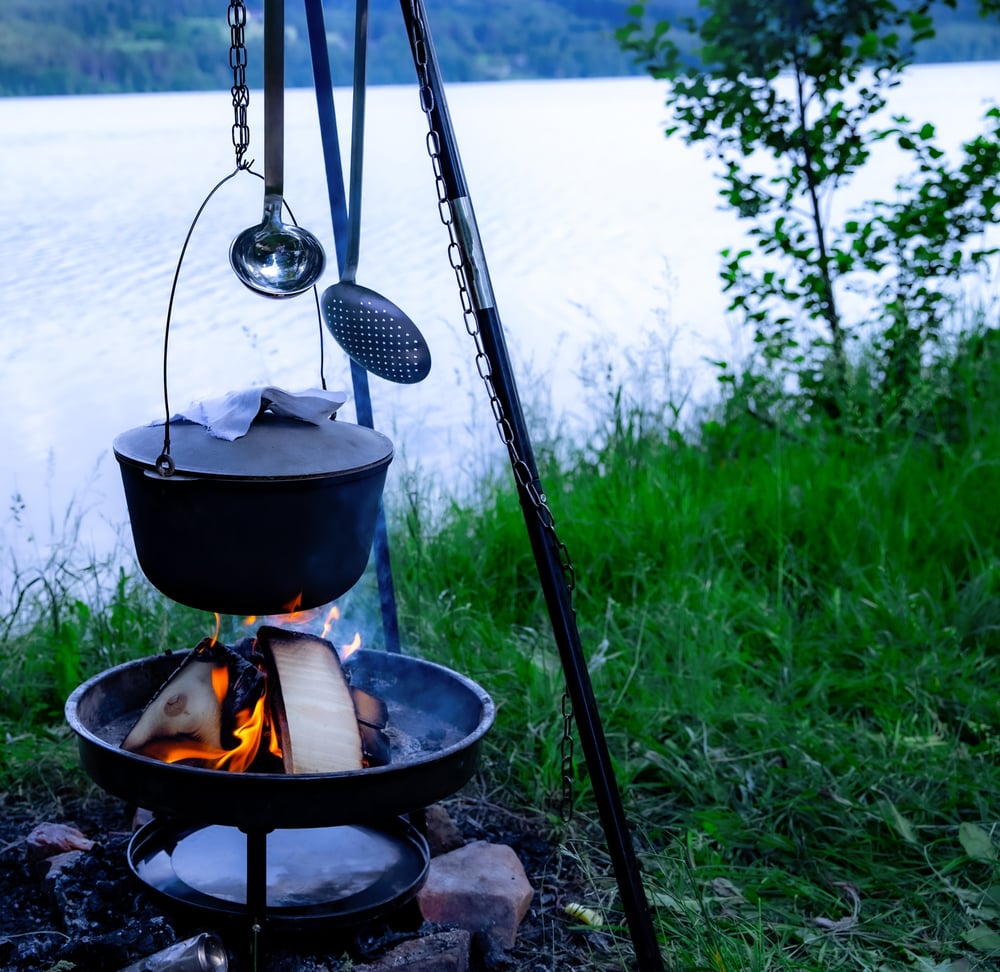
For starters, the cast iron distributes the heat better than other types of cookware. Also, the heavy lid seals in steam, keeping food tender and moist.
Recipes for Dutch Ovens include breads, meats, side dishes, as well as desserts.
Much of his book is devoted to these recipes. He also notes that no recipe can accurately predict how long it will take to cook, since every cooking situation is different.
Wind, air temperature, humidity, and types of coals are just a few of the variables that affect cooking time.
Fears explains in his book how to cook both with charcoal and with hardwood
When using hardwood, he prefers hickory, oak, mesquite, and hard maple in that order. Pines and other softwoods have a tendency to burn hot for a short period and then go cold.
When using charcoal, he likes to start it in a chimney starter much like you might with your grill. This eliminates the need for lighter fluid and other liquid starters.
Once your charcoal or hardwood coals are hot, Fears recommends a ring of coals arranged just inside the bottom edge of the pot and then a ring around the lid. He also suggests twice as many coals on the lid as underneath.
Placing the Dutch Oven on a pile of coals is likely to create hot spots inside and burn the food.
Another tip for avoiding hot spots is to rotate the bottom somewhat about every fifteen minutes and rotate the lid in the opposite direction at the same time. This keeps any place on the oven from being at the hottest locations for too long.
When cooking recipes that might make cleanup difficult, Fears likes to use aluminum pans inside the Dutch Oven to contain the food.
These are sized to be a couple inches smaller in diameter so they can be easily lifted out. This pan is placed on top of a trivet or rack to avoid overheating from contact on the bottom.
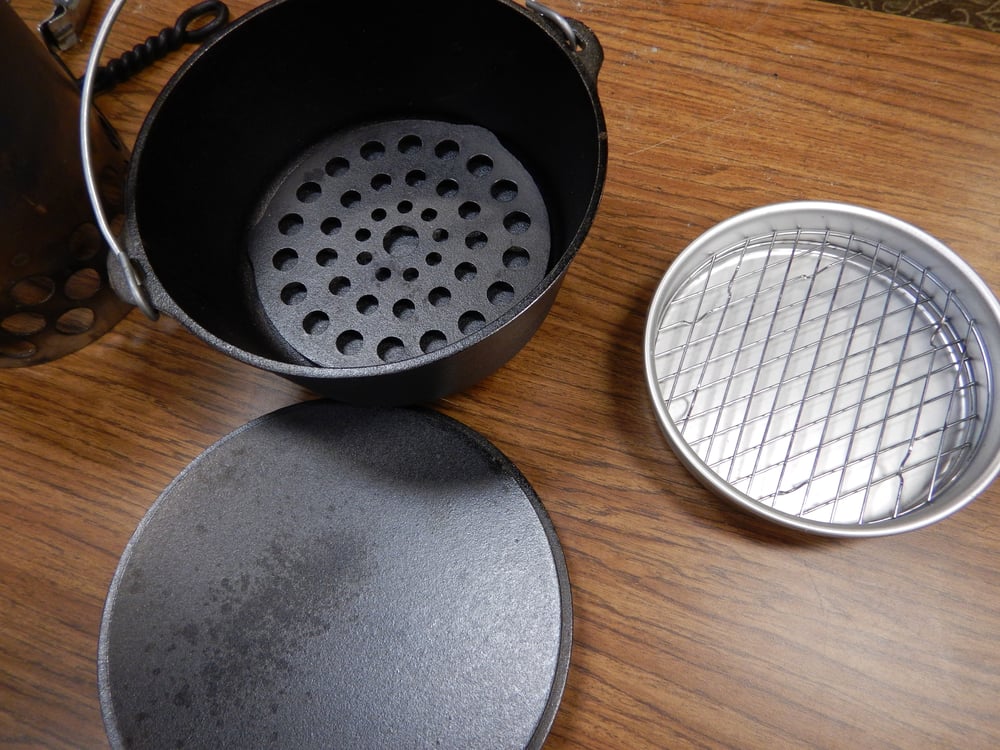
Recommended Accessories for Dutch Oven Cooking
Besides the Dutch Oven, Fears recommends several accessories that will make Dutch Oven cooking safer and more convenient.
For instance, he demonstrated his set-up using a cooking table that can be folded and packed up for ease of carrying. The table also had sides that could be used to block the wind.
Heavy leather gloves are a must when working with coals around the fire, as are long-handled tongs. Also, a small whisk broom is handy for sweeping ash off the lid before removing it.
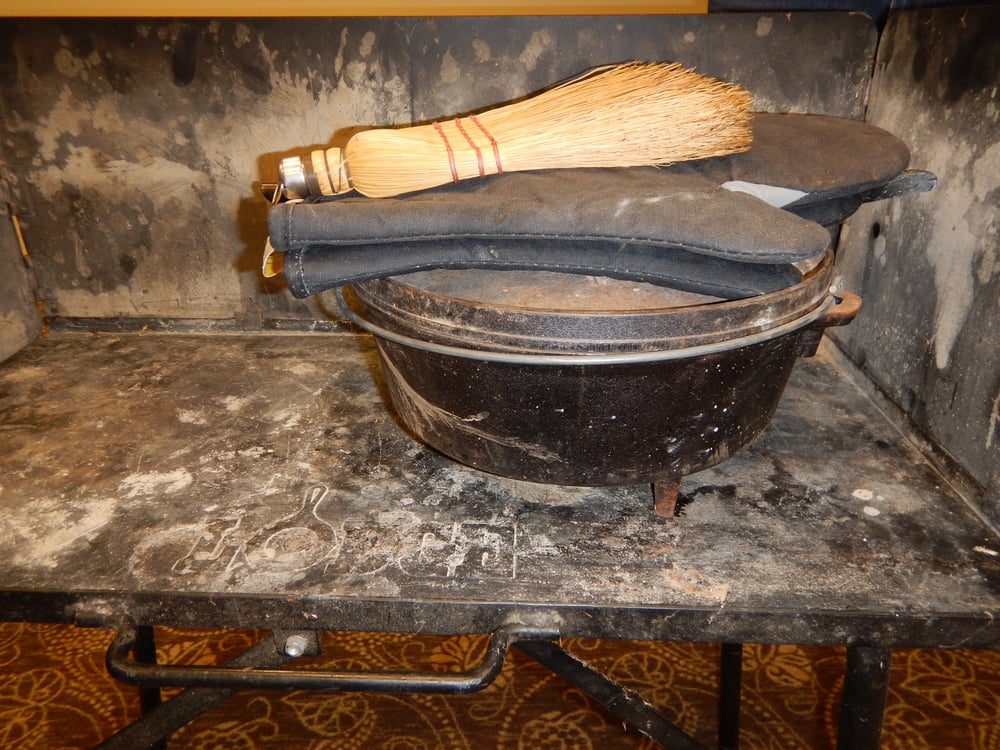
Caring For Your Dutch Oven
After his demonstration, I asked Fears about caring for Dutch Ovens as I had inherited one that had some rust on it.
He notes in his book that rust is something to be avoided with cast iron. Once it occurs, he suggests cleaning it off with steel wool, then re-seasoning the oven.
This can be done after washing in warm water and then drying.
The Dutch Oven should then be coated lightly with Crisco and put on a grill upside down for thirty minutes. This is also true for the lid. After thirty minutes, recoat the oven and repeat.
Once seasoned, the Dutch Oven should not need to go through this process again as long as you don’t use detergents or have to remove rust.
How to Cook Safely
As a final note, Fears stressed some safety tips.
For instance, charcoal should not be used inside the home or in a closed space because it can give off odorless toxic fumes.
Also, gasoline should never be used to light charcoal and cooking should be done away from flammable objects or where children might play.
Last, he emphasized proper footwear when working with coals. Since it’s easy to spill coals off the hot lid or drop them with tongs, you don’t want them falling inside sandals or through the holes of open shoes.
He added with a grin, “I learned this one the hard way.”


